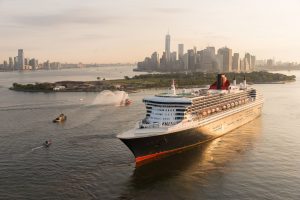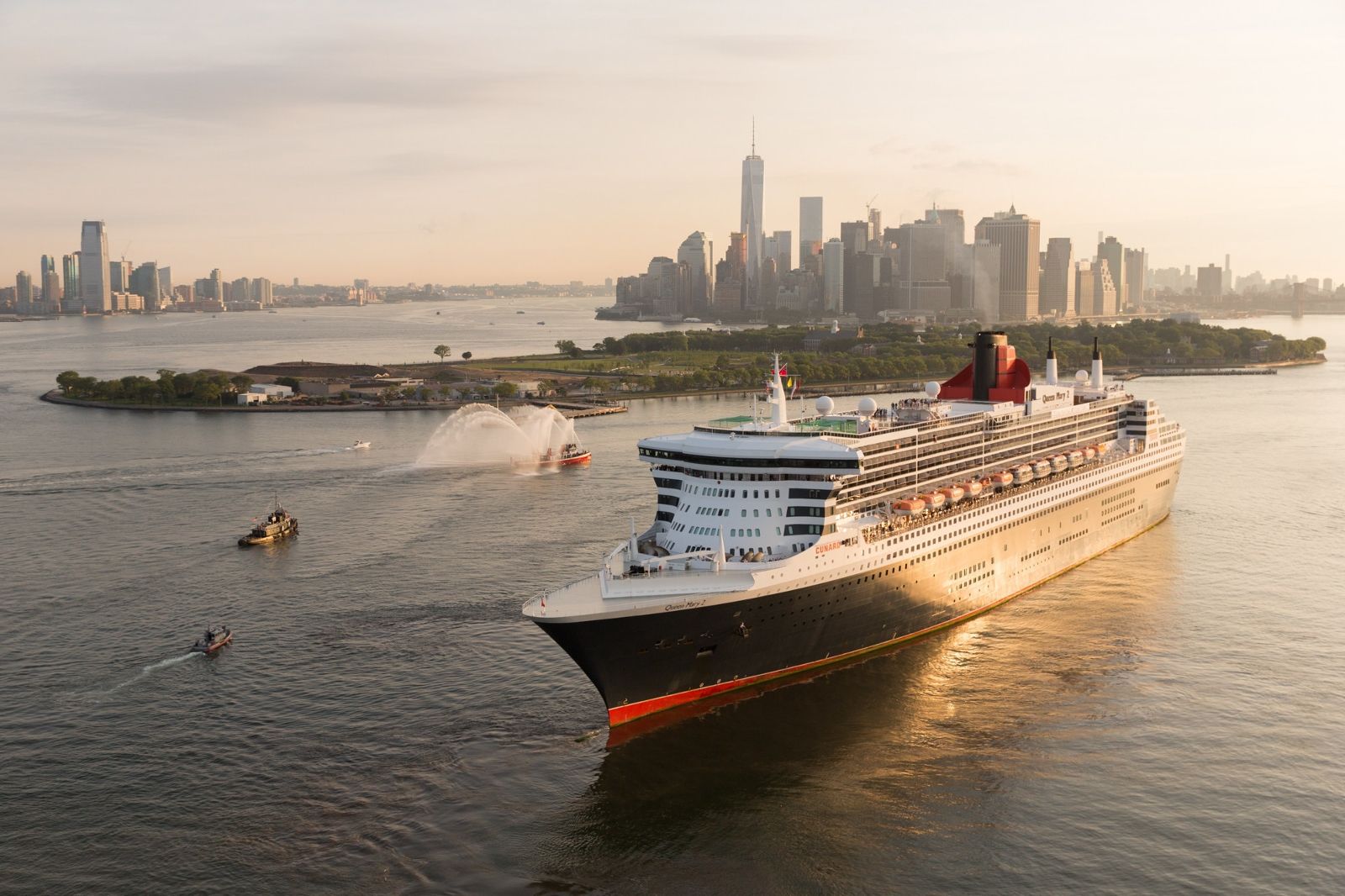Cunard’s flagship liner Queen Mary 2 will set sail this month on her first voyage following an investment in the region of $132 million, one of the most significant refurbishments undertaken by the world’s most venerable passenger shipping line, now marking 176 years in operation.

On 23rd June the remastered liner will sail into Southampton Water flanked by fleet royalty Queen Elizabeth and Queen Victoria, to be greeted by a host of high-profile guests. The vessel will then set sail for New York, continuing her schedule of iconic transatlantic crossings, a unique journey that has been enjoyed across the decades by famous personalities from the Golden Age of Ocean travel including Audrey Hepburn, Clarke Gable and Winston Churchill, to political figures and luminaries of today such as Archbishop Desmond Tutu, President George H.W. Bush, film maker Wes Anderson, actress Tilda Swinton, James Taylor, and many others.
The luxury liner has been lovingly remastered with new contemporary interior designs and guest experiences, some of which take inspiration from the original Queen Mary that launched at the height of the art-deco movement in the 1930s. Cunard’s investment, marking 80 years since the original liner launched, has ensured every detail from the carpets to the curtains recalls that iconic vessel which became a symbol of British elegance.
Over one million man hours has gone in to the refurbishment, over a 25 day period, 594,000 square feet of luxurious new carpets (the equivalent of 10 British football pitches) has been laid, 4,000 new framed pictures have been brought on board and over 3,900 gallons of paint have been applied to the ship’s hull – are just a few examples of the sheer size and scale of these refurbishments.
The essence of Queen Mary 2 lies in allowing guests to lose themselves in a world of glamour, timeless sophistication and luxury. Alongside brand new dining experiences, guests can sample the delights of the world’s finest wine cellar at sea, with a unique collection of 486 fine wines and a stunning collection of Ports, dating back to 1840.

